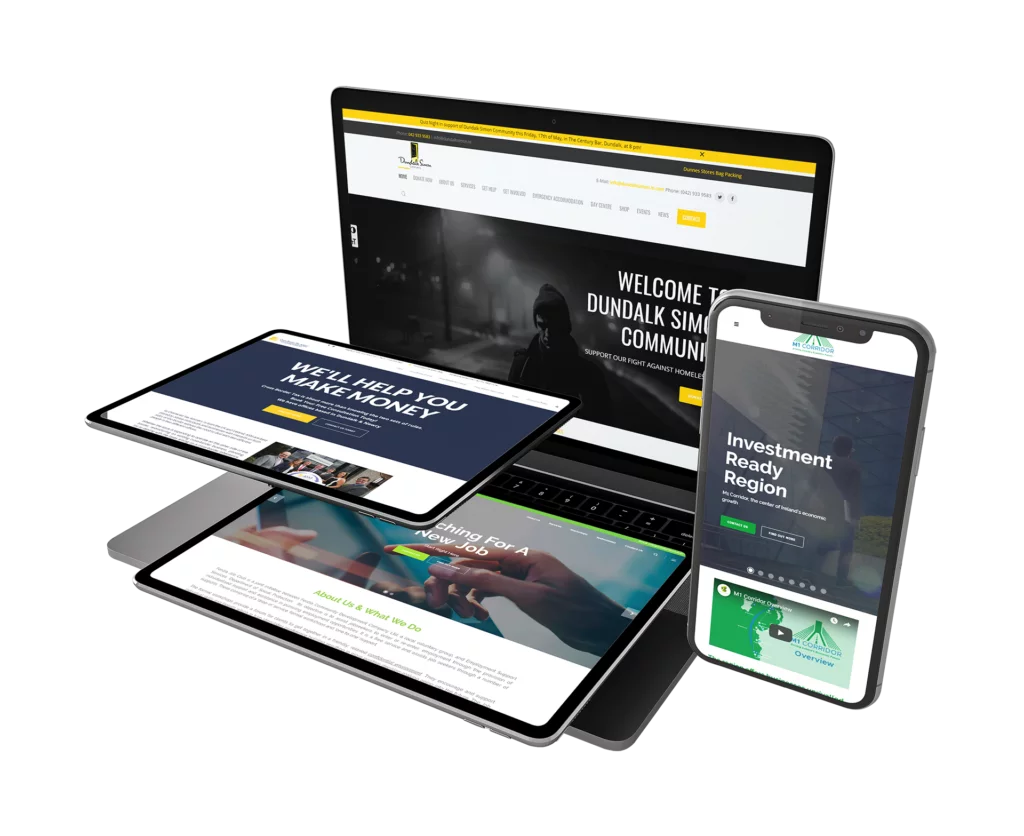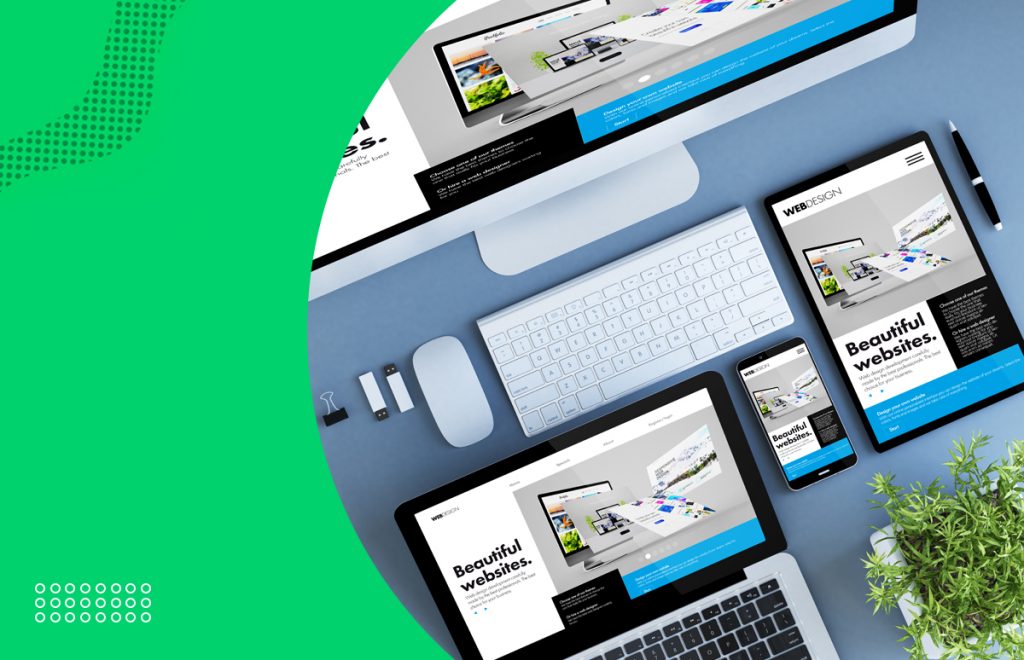How a Clean and Simple Website Design Can Enhance Your Site’s Usability
How a Clean and Simple Website Design Can Enhance Your Site’s Usability
Blog Article
The Ultimate Overview to Modern Internet Site Layout Trends
In the ever-evolving electronic landscape, modern site style fads play a vital duty in shaping user experience and interaction. From the increase of minimal style concepts that prioritize simplicity to the impact of vibrant typography in specifying brand identification, each element adds to a cohesive on-line visibility.
Minimalist Design Principles
Minimal design principles highlight the concept that much less is extra, advocating for simpleness and capability in visual communication. This method remove unneeded elements, concentrating rather on important parts that convey the desired message effectively. By prioritizing clearness, minimalist layout boosts customer experience, allowing visitors to browse internet sites effortlessly.
Core tenets of minimalist design consist of the use of adequate white room, which creates a feeling of equilibrium and company. This negative space not just routes the audience's focus to key elements yet likewise fosters a relaxing aesthetic ambience. In addition, a restricted shade combination is typically utilized, utilizing monochromatic plans or soft colors to maintain aesthetic cohesion and prevent frustrating the individual.
Typography plays a crucial role in minimalist style, where clear font styles are picked for their simpleness and effectiveness in connecting web content. Eventually, minimalist style concepts grow a focused atmosphere that urges users to involve with the material, boosting the total effectiveness of modern web site style.
Vibrant Typography Choices
Welcoming strong typography choices has actually come to be a defining characteristic of modern-day internet site design, as it successfully records focus and communicates strong messaging. Designers are progressively making use of typography not merely as a practical aspect however as a vital aesthetic element that boosts the general aesthetic and user experience.

In addition, the association of strong typography with minimal design principles enables striking contrasts, boosting readability while keeping visual charm. Making use of whitespace around strong text even more emphasizes its relevance, making certain that the message reverberates with the target market.
As digital landscapes become a lot more affordable, leveraging bold typography enables brands to distinguish themselves and leave a long lasting impression. The mindful option of fonts and their application can stimulate feelings, establish tone, and drive activity, making vibrant typography an essential device in contemporary internet site style. Ultimately, it is an effective means to boost narration and ensure that key messages are not just seen but also felt.
Receptive and Mobile-first Design
Receptive and mobile-first layout has arised as a critical concept in modern website advancement, showing the increasing dependence on mobile phones for accessing on the internet web content. As user actions shifts towards mobile browsing, developers have to focus on developing experiences that adjust effortlessly across various screen sizes and resolutions.
A receptive design guarantees that a site instantly readjusts its format, photos, and capability based upon the gadget being made use of. This approach improves customer experience by offering constant navigating and readability, irrespective of whether the visitor is on a desktop, mobile phone, or tablet computer computer system. Furthermore, mobile-first design advocates for establishing sites originally for smaller displays, ultimately scaling up to larger displays. This strategy encourages a much more reliable and streamlined style procedure, concentrating on essential content and functionality initially.
Applying mobile-first and receptive principles not only deals with user preferences however also aligns with search engine optimization (SEO) methods. Significant internet search engine, like Google, focus on mobile-friendly sites in their positions, making it imperative for companies to embrace these layout techniques. In a competitive digital landscape, welcoming responsive and mobile-first style is not just an alternative; it is necessary for making sure access and go to website interaction with a diverse audience.
Engaging Microinteractions
Microinteractions play a pivotal role in enhancing user involvement and overall website experience, specifically in the context of responsive and mobile-first layout. These refined design elements offer immediate comments to customers, making interactions extra satisfying and user-friendly. Examples include switch computer animations, notice Source informs, and packing indicators, which not just guide users however likewise produce a sense of link with the interface.
Including interesting microinteractions can significantly improve use by minimizing cognitive tons. When individuals receive visual or acoustic responses upon doing activities, such as clicking a switch or sending a form, they feel extra confident in their choices. This promotes a smoother navigation experience, inevitably increasing customer retention.

As site style fads continue to evolve, the relevance of microinteractions can not be overstated. They act as the refined yet effective touchpoints that change average communications into phenomenal experiences, thereby raising the overall effectiveness of contemporary web style.
Lasting Web Style Practices
Sustainable internet layout techniques are ending up being progressively important as the digital landscape grows and ecological worries climb. Developers and developers are acknowledging their duty to produce web sites that not only serve customer demands however also decrease environmental impact. This technique includes numerous crucial techniques.
Firstly, enhancing power consumption is paramount. Web sites should be created to load promptly and efficiently, which decreases web server power usage and boosts user experience. Techniques such as picture compression, lessening HTTP requests, and using contemporary coding practices contribute significantly to this objective.
Secondly, selecting eco-friendly hosting service providers is essential - website design. Many organizing business are now powered by eco-friendly power resources, making it possible for sites to operate in a much more sustainable way. This option mirrors a dedication to lowering carbon footprints
Furthermore, taking on a minimalist style can boost sustainability. Fewer components on a web page cause much less information transfer, which not just accelerates filling times however likewise saves resources.
Lastly, advertising electronic ease of access guarantees that web sites reach a broader target market without unnecessary bloat, lining up user experience with environmental obligation. By incorporating these lasting techniques, web designers can add favorably to Bonuses both user involvement and the earth's well-being.
Final Thought
In summary, modern site layout patterns highlight the assimilation of minimalist principles, strong typography, and responsive layout to boost individual experience. Engaging microinteractions add to remarkable interactions, while lasting methods advocate for environmentally aware growth. Collectively, these aspects not just elevate aesthetic charm but also enhance performance, making certain that sites are both user-friendly and aesthetically striking. Taking on these fads is necessary for creating impactful electronic experiences that reverberate with individuals in a progressively affordable on-line landscape.
In the ever-evolving electronic landscape, modern-day site design fads play a critical duty in shaping user experience and interaction. By prioritizing quality, minimalist style improves individual experience, allowing site visitors to browse internet sites easily.
Ultimately, minimal design concepts cultivate a concentrated atmosphere that motivates customers to engage with the web content, enhancing the total effectiveness of contemporary website style.Microinteractions play a critical duty in improving individual engagement and overall internet site experience, specifically in the context of responsive and mobile-first layout.In recap, contemporary web site style patterns highlight the assimilation of minimalist principles, strong typography, and receptive design to boost customer experience.
Report this page